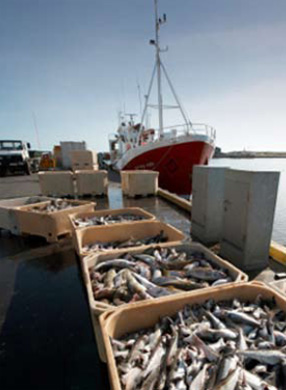Briefing: Overcapacity, What Overcapacity?
A briefing to the report, "Overcapacity, What Overcapacity?"
Fleet overcapacity
European fisheries – out of balance
In European Union (EU) waters, it is estimated that more than 80 percent of assessed fish stocks are overfished compared with approximately 25 percent globally. This is due to a number of different factors, principal among them being the overcapacity of the EU fleet.
What is overcapacity?
Fishing capacity, as defined by the United Nations Food and Agriculture Organization (FAO), is the amount of fish that can be caught within a set period of time (e.g. a year or a fishing season) by a vessel or a fleet if fully utilised for any given stock. The term ‘overcapacity' means that the maximum harvest level that a fleet could produce with given levels of inputs, such as fuel, fishing gear, ice, bait, engine power and vessel size, would exceed the desired level of harvesting. To put it simply: fleets operating with overcapacity can catch more fish than there are fish available.
The impact of overcapacity
Overcapacity leads to low economic performance, fuels illegal, unregulated and unreported (IUU) fishing, and increases political pressure to set catch
limits above scientific advice. It drives a vicious circle that generates an ever increasing imbalance between fleet capacity and available resources.
Extent of overcapacity
There is agreement that EU fleets operate with large overcapacity, but the full extent is unknown. The last published estimate for the capacity of
the EU fleet as a whole calculated there was more than 40 percent overcapacity. This assessment was based on a 1995 report, now believed to be out
of date. The European Commission more recently estimated that the EU fishing fleet can exert a fishing pressure on many stocks that is two to three
times the sustainable level.
Capacity management
The 2002 Common Fisheries Policy (CFP) reform substantially changed the way the EU fleet was managed: capacity reduction programmes with specific targets were terminated and replaced by reference levels for each Member State. These reference levels are automatically reduced if capacity is withdrawn through subsidies. Any introduction of new capacity has to be matched by the removal of at least the equivalent capacity, without being subsidised. The new management regime shifted more responsibility on to Member States, which are expected to achieve a balance between fishing capacity and available resources. It also imposed stricter requirements on them to report on their efforts to reduce overcapacity
Quantitative aspects of fleet management
So far the effect of letting Member States manage capacity has failed to reach a balance between fishing capacity and resources. Despite inflated fishing quotas that have been, according to the Commission itself, on average 48 percent higher than the scientific advice, European fleets have remained too large. Some fishers catch their annual quotas in a matter of weeks.
Qualitative aspects of fleet management
Reducing capacity begs the question: what type of fishing fleet should exist as the result of any reduction? Fleets with very different characteristics can have the same fishing capacity. They can differ in the number of fishers employed, in their impact on the marine environment and non-target species or in the quality of the fish products delivered. Consequently, it is important to factor in the qualitative aspects ensuring that any restructured fishing fleet contributes to the environmental, social and economic objectives of the CFP.
Monitoring and reporting
Until now, not all Member States have been meeting their legal requirement to adequately assess and report the overcapacities in their fleet segments. Repeated calls by EU bodies, including the Commission, on these Member States to comply with their reporting requirements have had little response. Reports are late or missing. The majority of reports do not adequately allow for an assessment of the fleet capacity in relation to available resources. The recently introduced guidelines to improve reporting and assessment of overcapacity are not followed consistently, making any EU-wide assessment impossible.
Policy recommendations
The reformed CFP must not only achieve a reduction in fleet capacity but must also ensure it is tailored around qualitative criteria, fostering the low impact sectors of the fleet while removing the most destructive and unsustainable.
Reducing and transforming the capacity of the EU fishing fleet will create significant economic, environmental and social benefits while securing the future of the fisheries sector. Delay of the necessary adjustments will only lead to a worsening of the already serious situation in EU fisheries. Appropriate transition support needs to be made available for those impacted by any capacity reduction. The European Commission and Member States need to step up and safeguard the EU fleet by:
• evaluating the balance between fishing capacity and fishing opportunities
on a fishery-by-fishery basis;
• creating a combination of financial, legal and other instruments that allow
a restructuring of the EU fleet based on criteria and guidelines prioritising
environmentally, socially and economically sound fishing;
• setting up capacity management objectives, including quantitative and
qualitative criteria, and implementation plans with specific timetables;
• ending subsidies schemes that support overfishing, and shifting funds to
support the transition towards a more sustainable fleet that is in balance with
the available resources; and
• acknowledging that once the fleet has reached a sustainable size there
is a constant need to mitigate the effects of increased capacity due to
technological improvements.






